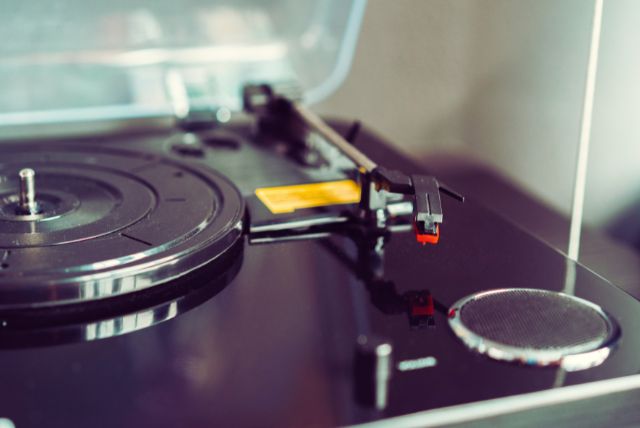If you have read my story, by now you already know that I belong to a family of vinyl record collectors. My grandfather introduced me to different record players and turntables since childhood. From replacing a stylus to changing the turntable belt, I have assisted him in repairs of different parts of his record player over the years.
Helping him gave me an opportunity to understand how these musical machines actually work, what components they are made of, and how important each of the components is to produce sound.
From stylus to cartridge to preamplifier, every component works in sync to bring melodious music to your ear. And this makes it a perfect example of mechanical teamwork (laughs).

Why exactly do you need to know this information?
It’s vital information for you because, like any other machine, your record player will also need maintenance over the years of use. And if you are aware of what components it is actually made of, you can easily replace any of the parts once it passes its lifespan.
So, whether you are just curious to know the anatomy of a LP player, want to impress your buddies with the knowledge, or want to maintain your turntable for years to come.
Let’s dive in and know what parts it is actually made of and what particular function each part performs.
Plinth
The plinth or base provides the structural support to all the components of a turntable. In simple terms, it’s the outermost casing that houses all the parts. The plinth also minimizes the vibrations and ensures a smooth audio playback.
While placing your turntable, always ensure the plinth is on a stable, flat surface like a table or stand to maintain its stability and performance.
Platter
Next comes the platter, which is a circular disc positioned above the plinth on which the vinyl record rests or rotates while playback. It’s generally made up of metal, acrylic or other dense material for stability.
A superior-quality platter is known to maintain a steady speed, minimize vibrations, and improve the clarity and precision of the sound produced.
Motor
The motor is what makes the turntable platter spin, giving it the power needed to play the record at the right speed.
There are two types of motors: direct drive and belt drive. In direct drive, the motor is directly placed under the platter. Whereas in belt drive, the motor is located away from the platter, and a rubber belt is used to spin the platter.
Belt
A rubber belt is a component that is only used in a belt drive turntable. It acts as a bridge between the motor and the platter, allowing the motor to supply the required torque for spinning the platter.
The main drawback of a belt drive turntable is that the belt needs replacement after a few years. However, it’s easy to replace if you follow the right steps.
Speed selector
Most record players have a speed selector feature that allows you to select between different playback speeds, such as 33 1/3, 45 and 78 RPM (Rotations per minute), to play 7-inch, 10-inch and 12-inch records. For example, to play a 7-inch record, you have the option to select the rotation speed at 45 RPM.
Getting the speed right is key to ensuring the music plays at the correct pitch and tempo, and that is where the speed selector helps you.
Stylus or needle
A stylus, or in simple terms, a needle, is a component that traces the physical patterns in the record grooves and converts them into electrical signals that later produce the sound. A good quality stylus is known to track grooves efficiently and minimize the wear and tear to the vinyl record.
The tip of the stylus Is generally made up of sapphire or diamond. There are four different types of styluses: Conical, Elliptical, Micro-linear and Shibata. You can read more about them here.
Cartridge
The turntable cartridge is a device that Is connected to the tonearm at one end and houses a stylus on the other. The main function of the cartridge is to convert vibrations produced by the stylus into electrical signals that are further transferred to the preamplifier and ultimately produce sound.
Superior quality cartridges ensure both rich and detailed sound output that makes your sound experience amazing.
Tonearm
A tonearm is an arm-like component that holds the stylus and cartridge. The tonearm’s key role in a vinyl player is to maintain steady pressure on the stylus, ensuring it always stays in contact and follows the vinyl grooves.
A well-balanced tonearm ensures accurate tracing, improves audio quality and reduces wear and tear, thus maximizing the life of both the stylus and vinyl record.
Cueing Mechanism
The cueing mechanism is typically a lever or a button that helps you to raise and lower the tonearm. It is important because it helps to prevent damage to both the stylus and the record.
When you lower the tonearm onto the record, the cueing mechanism makes sure that the stylus is perfectly positioned and aligned with the grooves.
Counterweight
The counterweight, found at the rear end of the tonearm, is a weight that can be adjusted. Its key function is to stabilize the tonearm and regulate the tracking force, which determines the pressure exerted by the needle on the vinyl surface.
A properly balanced counterweight minimizes wear and tear on both the needle and the vinyl record and ensures top-notch sound quality.
Anti-skate
The anti-skate feature in your record player stops the tonearm from skidding towards the centre of the record. The mere absence of anti-skate can cause wear and tear to both the record and the stylus and can also result in distorted audio quality.
Pre-amp
The preamplifier or phono pre-amp boosts the small electrical signal produced by the cartridges and transfers them to an amplifier, where they are further amplified and converted into sound.
You’ll find that some turntables include a built-in preamplifier, while for others, you’ll have to buy one separately.
Inputs and outputs
Record players come with input and output connectivity options that let you connect speakers, headphones and amplifiers using an RCA or an Aux cable for a better audio experience.
Some also offer Bluetooth connectivity options to connect all your wireless devices with ease.
Final Beat
A record player is an amazing musical device that is able to produce audio out of just a black disc called a vinyl record. Every component that it is made of works in coordination to bring the best sound experience to life.
Next time your friends ask you about any specific part of a turntable, you will be able to satisfy their curiosity. And in case you forget about something, you always have this blog at your fingertips for a quick reference. Cheers!
Till then, keep enjoying life and keep playing your favourite records!



Simply desire too say your article is as astonishing. The clearness on your post is
just nice and that i ccan think you are knowledgeable in this subject.
Thanks for the appreciation, Frieda. Turntable and vinyl records have been part of my family for years, which has deepened my knowledge and passion for them. 🙂